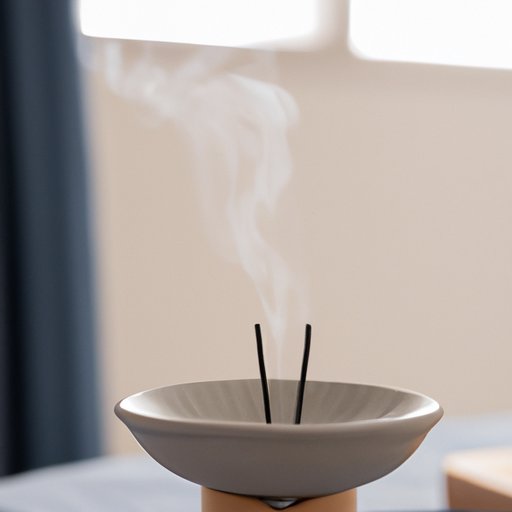Introduction
Incense is a fragrant smoke made from a variety of natural ingredients, such as stems, roots, leaves, wood, and resin. It has been used in religious ceremonies, spiritual practices, and traditional medicine for centuries as a way to purify and cleanse the air. Today, incense is widely available in many forms, including sticks, cones, and coils, and is often used to add a pleasant scent to the home.
While the use of incense may have its benefits, there are also some potential health risks associated with it. In this article, we’ll explore the evidence for both the health risks and benefits of burning incense.
Investigating the Health Risks of Incense Use
A number of studies have investigated the possible health risks associated with incense use. A systematic review published in 2017 examined the effects of incense burning on respiratory health. The researchers found that the use of incense was associated with an increased risk of asthma, wheezing, and other respiratory symptoms.
In addition, a study published in 2018 found that people living in households where incense was burned had higher levels of airborne particles and volatile organic compounds (VOCs) than those living in households where incense was not burned. These particles and VOCs can be harmful to health, particularly when inhaled.

Examining the Impact of Incense Smoke on Indoor Air Quality
The smoke produced by burning incense can contain a number of pollutants, such as carbon monoxide, nitrogen dioxide, and formaldehyde. When these pollutants accumulate in an enclosed space, they can affect the quality of the air and contribute to indoor air pollution.
A study published in 2019 found that burning incense significantly increased the concentration of airborne particles and VOCs in a room. The researchers concluded that burning incense could negatively impact the air quality in a room, particularly if it is done frequently or in an enclosed space.
The Effects of Incense on Children’s Health
Children are particularly vulnerable to the potential health risks associated with incense use. A study published in 2020 found that children exposed to incense smoke in their homes were more likely to develop respiratory illnesses, such as asthma and bronchitis. The researchers concluded that incense smoke could be a contributing factor to the development of respiratory illnesses in children.
To minimize the health risks associated with incense use for children, it is important to ensure that incense is only burned in well-ventilated areas, away from children. It is also recommended that incense be burned for short periods of time and that windows and doors be opened to allow for adequate ventilation.
Are There Any Benefits to Burning Incense?
Despite the potential health risks associated with incense use, there may also be some benefits. A study published in 2016 found that burning incense could help reduce stress and anxiety levels. The researchers concluded that incense smoke could act as an aromatherapy treatment and could be beneficial for mental health.
In addition, a study published in 2017 found that burning incense could help reduce levels of airborne bacteria. The researchers concluded that incense smoke could act as a disinfectant and could help improve indoor air quality.
Conclusion
In conclusion, burning incense can have both positive and negative impacts on health. While there is some evidence to suggest that incense smoke can help reduce stress and anxiety levels and improve indoor air quality, it can also be harmful to health, particularly when inhaled. Children are particularly vulnerable to the potential health risks associated with incense use and should not be exposed to incense smoke.
To minimize the health risks associated with incense use, it is important to ensure that incense is only burned in well-ventilated areas, away from children. It is also important to limit the amount of time that incense is burned and to open windows and doors to allow for adequate ventilation.
(Note: Is this article not meeting your expectations? Do you have knowledge or insights to share? Unlock new opportunities and expand your reach by joining our authors team. Click Registration to join us and share your expertise with our readers.)
